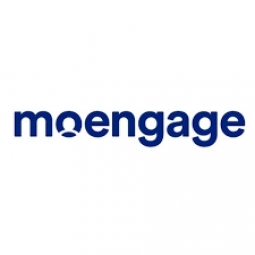Download PDF
PetFlow Boosts Engagement and Drives In-Store Traffic with Web Push Notifications
Technology Category
- Analytics & Modeling - Machine Learning
- Cybersecurity & Privacy - Intrusion Detection
Applicable Industries
- Equipment & Machinery
- Retail
Applicable Functions
- Sales & Marketing
Use Cases
- Retail Store Automation
- Traffic Monitoring
The Challenge
PetFlow, a leading retail brand of specialty pet food and supplies, was facing a significant challenge in late 2016. Despite their data-driven culture and personalized advice attracting pet lovers, they noticed a consistent decline in the engagement their customers and prospects had with email, their most powerful channel. This was a major concern, especially as the cost to acquire new customers was increasing and retaining existing customers was becoming a necessary activity. The Director of Marketing, Andrea Barsk, recognized that relying solely on email as an engagement channel was not sustainable. Simply sending out more promotional emails to get more sales was not a viable long-term strategy, as it could negatively impact deliverability and the bottom line.
About The Customer
PetFlow is a leading retail brand of specialty pet food and supplies. They offer a wide range of products, including food, treats, toys, bedding, accessories, and health supplies, with convenient auto-ship options. PetFlow has a data-driven culture and is known for providing personalized advice to pet lovers. Despite their success, they faced a challenge with declining email engagement, which was a major concern as email was their most powerful channel. The company needed a solution that would not only address this issue but also help in retaining existing customers and reducing the cost of acquiring new ones.
The Solution
To address this challenge, Andrea and her team turned to an emerging new channel - web push notifications. These notifications, also known as browser push notifications, were being adopted by media brands for pushing out breaking news alerts. Recognizing that few online retailers were leveraging this tool, PetFlow decided to implement it. They partnered with MoEngage to set up and deliver web push notifications to desktop and mobile devices based on a user’s on-site behavior. MoEngage worked with the PetFlow marketing team to create a series of behavior-driven campaigns which took an individual's behavior on the site and automatically created messaging to drive action. Two key automated campaigns were set up: Browse Abandonment notifications and Shopping Cart abandonment notifications. These notifications were personalized and automatically delivered within a time window at the optimum time for response, using MoEngage’s machine learning tool, Sherpa.
Operational Impact
Quantitative Benefit
Related Case Studies.

Case Study
Smart Water Filtration Systems
Before working with Ayla Networks, Ozner was already using cloud connectivity to identify and solve water-filtration system malfunctions as well as to monitor filter cartridges for replacements.But, in June 2015, Ozner executives talked with Ayla about how the company might further improve its water systems with IoT technology. They liked what they heard from Ayla, but the executives needed to be sure that Ayla’s Agile IoT Platform provided the security and reliability Ozner required.

Case Study
IoT enabled Fleet Management with MindSphere
In view of growing competition, Gämmerler had a strong need to remain competitive via process optimization, reliability and gentle handling of printed products, even at highest press speeds. In addition, a digitalization initiative also included developing a key differentiation via data-driven services offers.

Case Study
Predictive Maintenance for Industrial Chillers
For global leaders in the industrial chiller manufacturing, reliability of the entire production process is of the utmost importance. Chillers are refrigeration systems that produce ice water to provide cooling for a process or industrial application. One of those leaders sought a way to respond to asset performance issues, even before they occur. The intelligence to guarantee maximum reliability of cooling devices is embedded (pre-alarming). A pre-alarming phase means that the cooling device still works, but symptoms may appear, telling manufacturers that a failure is likely to occur in the near future. Chillers who are not internet connected at that moment, provide little insight in this pre-alarming phase.

Case Study
Premium Appliance Producer Innovates with Internet of Everything
Sub-Zero faced the largest product launch in the company’s history:It wanted to launch 60 new products as scheduled while simultaneously opening a new “greenfield” production facility, yet still adhering to stringent quality requirements and manage issues from new supply-chain partners. A the same time, it wanted to increase staff productivity time and collaboration while reducing travel and costs.

Case Study
Integration of PLC with IoT for Bosch Rexroth
The application arises from the need to monitor and anticipate the problems of one or more machines managed by a PLC. These problems, often resulting from the accumulation over time of small discrepancies, require, when they occur, ex post technical operations maintenance.

Case Study
Robot Saves Money and Time for US Custom Molding Company
Injection Technology (Itech) is a custom molder for a variety of clients that require precision plastic parts for such products as electric meter covers, dental appliance cases and spools. With 95 employees operating 23 molding machines in a 30,000 square foot plant, Itech wanted to reduce man hours and increase efficiency.





